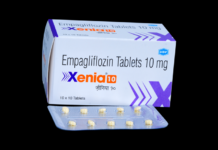By Dr. Brunda, Consultant, Internal Medicine, Aster CMI Hospital
Every year around the world, millions lose their lives due to lack of access to primary healthcare, and many more have to choose between good preventive healthcare and expenses on basic needs like home, food and clothes. This is precisely the reason why the WHO has been constantly focusing on universal health coverage for all as its year on year theme for World Health Day, April 7.Universal Health Coverage is WHO’s number one goal and the way to achieve this is to ensure everybody has access to healthcare when they want it most.
There are a few shortcomings in the Indian healthcare system such as lack of access to primary care, increasing out of pocket expenses and poor doctor to patient ratio. People often tend to ignore symptoms of several diseases and adopt practices such as self-medication,advice from friends, family and local doctors who may often lack expertise in treating these diseases. This results in poor clinical outcomes and higher costs. The neglect of primary care in India is one of the reasons for increasing disease burden and medical costs.
Primary health care is the most efficient and cost effective way to achieve universal health coverage in India.It is believed that the lack of primary care puts populations at great risk of health problems and costs the world trillions which is why there is the need to improve quality and safety of health and better access to healthcare. According to Lancet report (2018), almost 2.4 million Indians die of many treatable conditions every year which is the worst situation among 136 nations in the world. The report further highlights that insufficient access to healthcare and poor quality care has led to the deaths of more than 1.6 million Indians in 2016 leading to a huge economic loss for the country.
The solution to solving this problem requires that data be collected on gender, age, income, location, education and other factors that affect access to health services. The information,once gathered,has to be distributed among policy and decision makers so that they can ensure that the right access to healthcare is available to all.
The first level of contact for good health is the primary health sector where all people receive most of their healthcare – from prevention, treatment to rehabilitation and palliative care. This access should be available close to their homes or workplace. This kind of primary care ensures that health is taken care of on an overall level, and not limited just to the treatment of a specific condition or disease. In India, a wide range of services are offered at primary health centres- such as basic screening, vaccines, information on preventing disease, treatment of long-term health problems and more. The important reason for taking up primary care is that it is a cost-effective and equitable mode of delivering services and a practical way of trying to reach the goal of universal health coverage.
The Government of India has been making some efforts to ensure that quality healthcare reaches everyone and especially in the poorest regions. India launched the National Health Mission (NHM) in 2013, the country’s largest public health programme to achieve universal access to healthcare by getting more health care centres in all corners of the country to tackle communicable and non-communicable diseases.The government is pushing for the establishment of more clinics in rural areas to make sure that good access to healthcare is available to the rural population. District hospitals too need to be revamped and upgraded with more facilities, doctors and nurses. Urban areas are generally well-endowed and people have better access to medical professionals. Extending their services to rural areaswould alleviate the problem of shortage of medical personnel. The effort of the government must be to balance urban-rural to ensure universal coverage.
In 2018, following the 2013 model, the Government of India announced the Ayushman Bharath scheme that potentially benefits over 10 crore vulnerable and underprivileged families. Under this scheme, insurance coverage of Rs 5 lakh was offered per family for secondary and tertiary hospitalisation. The goal was to ensure health coverage for 50 crore people across the country. The scheme is said to be the largest of its kind in the world. While a lot more has to be done, but a good beginning has been made by the Government.
Corporate Comm India(CCI Newswire)

























